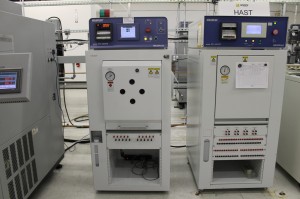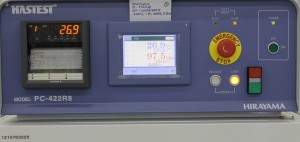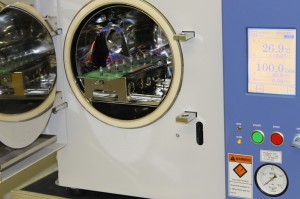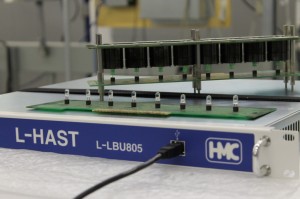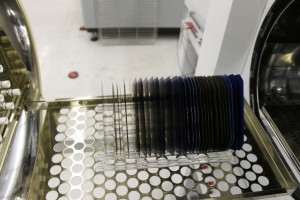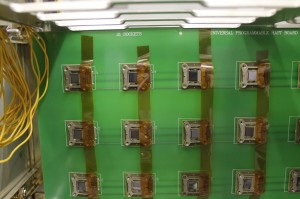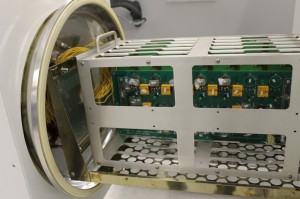HAST (Highly Accelerated Stress Test)
HAST testing accelerates the penetration of moisture through the external protective materials or sealants or between the external material and conductors. This is done by applying pressure under set conditions of Temperature and Humidity continuously. This uses a non-condensing (unsaturated method) of applying super-heated steam in a pressurized and temperature controlled environment.
Biased and Unbiased HAST Testing
HAST testing has become a standard, particularly in the Semiconductor, Solar and other Industries as the fast and effective alternative to the standard Temperature Humidity Bias testing (85C/85%RH-1000 hrs).
The HAST (Highly-Accelerated Temperature and Humidity Stress Test) has become a critical part of the device package Reliability & Qualification process. It is predominantly used to evaluate the reliability of non-hermetic packaged devices under humidity environments. This is done by setting and creating the various conditions of Temperature-Humidity-Pressure within a highly controlled pressure vessel. These conditions accelerate moisture penetration through the external protective plastic package and apply these stress conditions to the die/device.
Today’s technology is moving towards low profile/low geometry packing of devices with higher leakage core current which creates internal power dissipation and this in turn moves the moisture away from the die/device and this prevents the analysis of moisture-related failure mechanisms.
Per JEDEC JESD22-A110D, if the Test Specimen’s dissipation exceeds 200 mw the Tj should be calculated. If the calculated value of Tj >10°C above chamber ambient then the bias to the device should be duty-cycled. This cycled bias will allow moisture collection on the die during the off periods. In general a 50% duty cycle of bias is recommended for most of the encapsulated plastic devices.
The other method to reduce/control the test devices’ power dissipation is by resetting the device or placing it in a sleep mode, which can be done by applying signals via external divers and control.
• JEDEC standard JESD22-A110 (Biased HAST) and JESDA118 (Unbiased HAST)
Typical Conditions:
130°C/85%RH/33.3 psia and
110°C/85%RH.17.7 psia
Duration: 96 or 264 hours
Power cycled Biased HAST testing is usually performed for high power devices.
Lot sizes can vary (44, 77, etc.) based on standards or per customer specified requirement.
We design, develop, manufacture, select materials (Critical Socket & PCB material) and provide full-turnkey services for HAST boards for many types of Test Specimens.
The HAST Chamber is an effective tool for running the Surface Isolation Resistance (SIR) Analysis where the subject test specimen is typically set up with the following test parameters:
110C/85%RH/5VDC/264hours under Pressure conditions.
The HAST Chamber is also used performing Conductive Anodic Filament (Volume/Material) CAP Analysis where the subject test specimen is typically set up with the following test parameters:
130C/85%RH/3, 5VDC/96 hours under Pressure conditions. These tests are essentially used for checking out the via-to-via or plane-to-plane in PCB’s.
Some of the other tests include the Electro-chemical Migration (ECM) for PCB’s
Reference: JEDEC Standard JESD22-A110



